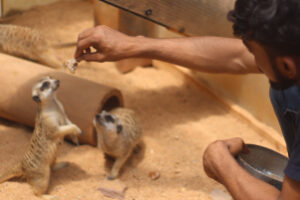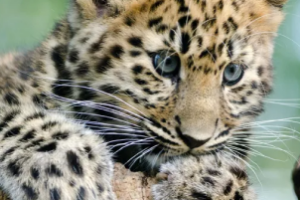
IMPACT OF URBANIZATION ON WILDLIFE
BY R BHARATH :-
With time it is clear that the world is becoming more and more urban. It has been predicted that by the year 2050, 70% of the human population on Earth will live in cities. There are many environmental problems that are associated with so much urbanization on the wildlife.
The loss of natural ecosystems
Like the loss of valuable farmland, as urban areas continue to grow and spread across the landscape, this development process often leads to the development of previously pristine ecosystems.
Pollution
Cities can be large sources of air pollution, water pollution, land pollution, and soil pollution, waste that is littering the landscape, and are also often associated with challenging issues of sanitation that can lead to the pollution of land and water.

Waste
Cities are a large source of waste. This waste if not managed end up polluting the landscape and waterways. Industrial and toxic waste that is produced in cities can lead to large amounts of pollution of the urban landscape, causing many environmental issues. For example, disturbing pics of animals and birds feeding on plastics and other waste materials have become a common sight these days.
Urban runoff
Cities contain large amounts of impervious surfaces that do not allow water to infiltrate the ground. Much of the rainwater that does fall on the urban landscape quickly runs off into rivers and streams, bringing all of the pollutants and chemicals that were present on these surfaces with them into waterways in turn affecting the life in water bodies.
Light Pollution
With increased urbanization, there is a lot more light that shines at night. There are studies that indicate that all of the human-produced light at night is disrupting the natural biological rhythms of organisms that have evolved within a dependable natural night and daylight cycle. This can impact not only diurnal species, but also nocturnal species that greatly depend on it being naturally dark at night time.
Noise Pollution
With increased global urbanization, there is also an increased level of noise, both in volume and in consistency that other organisms are constantly exposed to. Because wildlife is highly dependent on sound, they can become disoriented and their behaviour and communication abilities can be hampered due to the excessive noise levels that they are exposed to in and around urban areas.
Fragmentation of habitat and isolation of wildlife and plant populations
As urban development continues across the landscape, wildlife habitat is becoming increasingly fragmented and wildlife and plant populations are becoming increasingly isolated from one another. This habitat fragmentation impacts these organisms’ capacity to reproduce and reduces the genetic diversity that is present within the remaining populations. It also reduces the suitable habitat that is needed for their survival.
An increase in human-wildlife conflicts
As human development fragments habitat and leaves wildlife with no place to go, there has been an increase in human-wildlife conflict. Wildlife is hit by vehicles, birds and insects hit windows on cars and buildings and are killed, and sometimes wildlife comes into human communities looking for food and other resources that they need to survive. Sometimes, wildlife may be killed if they exhibit aggression or prey on pets or livestock. Sadly, only a few select hardy species can ultimately adapt and survive in an urban area and in such constant proximity to humans.
Feral animals and pets
Wherever humans have dwelled, they have always brought along their animals, both for companionship and for helping with labour. In urban areas, the keeping of animals has resulted in the feralization of many different animals like cats that compete and prey on local wildlife, and pets that do the same thing as well.
Loss of connection with nature
As more people are living in urban areas than ever before, many of them have begun to lose the intimate connection that they once had to the land they depend on, how all living things are connected, and how nature actually works.
This global disconnection from nature has led to many unsustainable public policies and a lack of concern about nature by the public. People will not protect that which they do not understand or do not care about. If we really want to save our planet for our future generation, we must help others to reconnect with nature so that they can learn to value and protect it.




